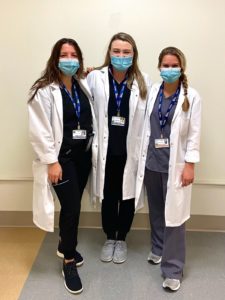Today we will look at the costs of aspiration associated with dysphagia.
Dysphagia, or difficulty eating, chewing, and swallowing, affects nearly 25 million people in the United States and by its very nature (Foley et. al. 2008) can affect individuals at any age. However, it is most common in adults over 65. Individuals diagnosed with head and neck cancers, stroke, brain trauma, cerebral palsy, Parkinson’s, Alzheimer’s, and Huntington’s diseases (Smith & Goldstien, 2008) are also at risk.
Other research suggests that up to 89% of patients with aspiration pneumonia, a major cause of morbidity and mortality among the elderly, have dysphagia (Smith, et. al. 2006, Joint Commission, 2006). Aspiration pneumonia can develop due to the entry of food or liquid into the lungs. Undiagnosed dysphagia, resulting in aspiration pneumonia, can cost medical institutions an estimated $4,300 per day, per patient (Katzan, et. al. 2003).
As we all know, Skilled Nursing Facilities around the country have active initiatives to reduce rehospitalizations. Not only are rehospitalizations costly, but they are also potentially traumatic to aging seniors with multiple chronic medical conditions.
Speech-Language Pathologists are inherently drawn to help specifically in the area of pneumonia, more specifically, aspiration pneumonia. In a recent study, (Katzan, et al. 2003) confirmed that the cost of pneumonia after stroke is not trivial and that the average cost of a case of pneumonia to be $21,338.
Financial costs aside, other studies link aspiration pneumonia after stroke and cerebral vascular incidents and note the increased risk for death in the hospital or nursing facility due to pneumonia (Ovbiagele, et al., 2003. Saposnik, et al., 2008). The relationship between pneumonia and the relative risk for death is an important finding when considering how to approach dysphagia identification. Evaluating for dysphagia is important given the known risks for pneumonia and the apparent costs associated with treating a preventable illness.
By having a skilled clinician treat the dysphagia before the issue exacerbates into a more serious condition, ideally, the risk of a serious medical event can be mitigated. Speech-Language Pathologists that are skilled in gerontological dysphagia management are integral for any skilled nursing team. Having highly trained clinicians that stay current on treatment protocol as well as the regulatory changes associated with working in Skilled Nursing Facilities help mitigate the risks of revenue loss as well as untimely re-hospitalizations or death.
Instrumental exams such as flexible endoscopic evaluation of the swallow (FEES) provide valuable and timely feedback when assessing residents for diet upgrade or ruling out aspiration and the risk of aspiration pneumonia. Having clinicians with the availability to perform FEES testing on-site, provides added value to the SNF and it saves the time & effort of sending residents out of the building.
Certainly, the issue of the cost may be of concern. FEES equipment can run in the tens of thousands of dollars and many facilities might not see enough reimbursement revenue to justify the expense.
Most SNFs that have adopted FEES utilize the service of a Mobile FEES provider. Great mobile FEES providers provide many benefits to the SNF by:
- Investing in equipment that is modern & portable
- Staying current on the latest cleaning technique
- Having portable FEES equipment means the SNF does not have to purchase its own
- Being efficient with their time and that of the SLP by scheduling multiple FEES on the same day
If your SNF has questions about Speech Department operations, FEES testing, SLP Component, or perhaps something else, please contact us at info@langfun.com
“Works Cited: Foley N, Teasell R, Salter K, Kruger E, Martino R. Dysphagia treatment post-stroke: a systematic review of randomized controlled trials. Age and Ageing. 2008; 37:258–264. [PubMed: 18456790]Joint Commission, 2006 Joint Commission. Stroke Disease-Specific Care Performance Measures [PDF]. 2006.Katzan, R. D. Cebul, S. H. Husak, N. V. Dawson, D. W. BakerNeurology Feb 2003, 60 (4) 620-625; DOI: 10.1212/01.WNL.0000046586.38284.60Ovbiagele B, Hills NK, Saver JL, Johnston SC. Frequency and determinants of pneumonia and urinary tract infection during stroke hospitalization. J Stroke Cerebrovasc Dis. 2006; 15(5):209– 13. [PubMed: 17904077]Saposnik G, Hill MD, O’Donnell M, et al. Variables Associated with 7-Day, 30-Day, and 1-Year Fatality After Ischemic Stroke. Stroke. 2008; 39:2318–2324. [PubMed: 18566303]Smith Hammond CA, Goldstein LB. Cough and Aspiration of Food and Liquids Due to Oral-Pharyngeal Dysphagia: ACCP Evidence-Based Clinical Practice Guidelines. Chest. 2006; 129:154– 168.”


